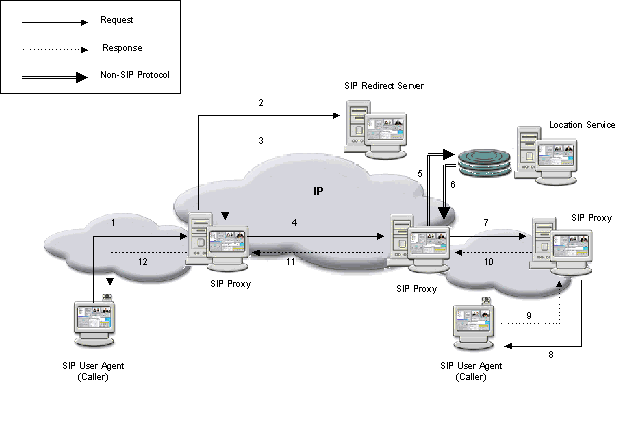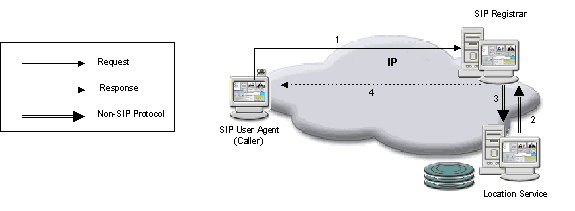What is SIP?
The Session Initiation Protocol, or SIP, is a new IETF signaling protocol for establishing real-time calls and conferences over Internet Protocol networks. Each session may include different types of data such as audio and video although currently most of the SIP extensions address audio communication. As a traditional text-based Internet protocol, it resembles the hypertext transfer protocol (HTTP) and simple mail transfer protocol (SMTP). SIP uses Session Description Protocol (SDP) for media description.
SIP is independent of the packet layer. The protocol is an open standard and is scalable. It has been designed to be a general-purpose protocol. However, extensions to SIP are needed to make the protocol truly functional in terms of interoperability. Among SIP basic features, the protocol also enables personal mobility by providing the capability to reach a called party at a single, location-independent address.
Relationship Between SIP and H.323
Both SIP and H.323 define mechanisms for call routing, call signaling, capabilities exchange, media control, and supplementary services. SIP is a new protocol that promises scalability, flexibility and ease of implementation when building complex systems. H.323 is an established protocol that has been widely used because of its manageability, reliability and interoperability with PSTN. There is a general consensus among standards organizations, companies and technology experts that standardized procedures need to be specified to allow seamless interworking between the two protocols. Bodies such as TIPHON (ETSI), aHIT (IMTC) and IETF are working to address this topic.
RADVision is leading the ITU-T SG16 initiative to define SIP guidelines, and is working closely with other ITU members to achieve true end-to-end connectivity between the two protocols on the same network infrastructure providing global services to end-users. To achieve an interoperable system, the following items need to be addressed:
| • | Topology Definition - The architecture needs to be defined in terms of the respective entities. Call scenarios and interfaces must then be developed based on the defined topology. | ||
| • | Supported Services - Advanced services such as conference calls and supplementary services should be incorporated. | ||
| • | Supported “Data Capabilities” - H.245 channels to Session Description Protocol (SDP) mapping are essential to respond to issue of supporting audio and multimedia support. | ||
| • |
Protocol Versions - The protocol versions of both SIP and H.323 need to be addressed in order to define the scope of the work. |
SIP Architecture
SIP’s basic
architecture is client/server in nature. The main entities in
SIP are the User Agent, the SIP Proxy Server, the SIP Redirect
Server and the Registrar.
The User Agents, or SIP endpoints, function as clients (UACs) when initiating requests and as servers (UASs) when responding to requests. User Agents communicate with other User Agents directly or via an intermediate server. The User Agent also stores and manages call states.
SIP intermediate
servers have the capability to behave as proxy or redirect
servers. SIP
Proxy Servers forward requests from the User Agent to the next
SIP server, User Agent within the network and also retain
information for billing/accounting purposes. SIP Redirect Servers
respond to client requests and inform them of the requested
server’s address.
Numerous hops can take place until reaching the final
destination.
SIP’s tremendous flexibility allows the servers to
contact external location servers to determine user or routing
policies, and therefore, does not bind the user into only one
scheme to locate users.
In addition, to maintain scalability, the SIP servers
can either maintain state information or forward requests in a
stateless fashion.

Session
Initiation
The third entity that comprises SIP is the SIP Registrar. The User Agent sends a registration message to the SIP Registrar and the Registrar stores the registration information in a location service via a non-SIP protocol. Once the information is stored, the Registrar sends the appropriate response back to the user agent.

SIP Registration
Session Description Protocol (SDP)
The Session Description Protocol, or SDP, is a protocol for describing audio, video and multimedia sessions. SIP, MGCP (Media Gateway Control Protocol), SAP (Session Announcement) and RTSP (Real-Time Streaming Protocol) all use SDP.